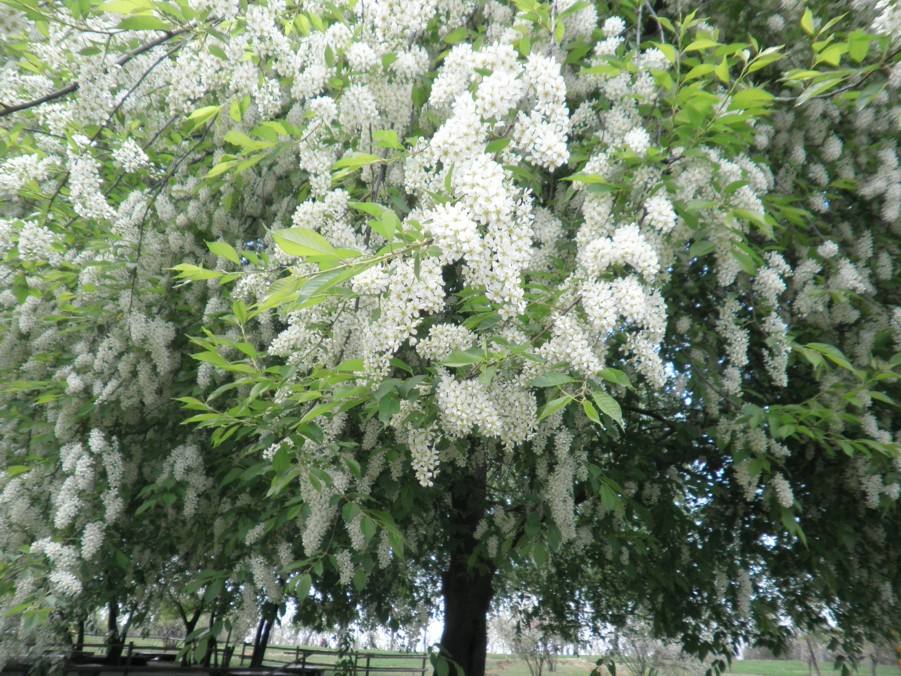Prunus padus seed
Prunus padus ‘Bird Cherry’
Rosaceae: A small deciduous tree to 17m. Found in limestone areas, by streams and in damp woods and hedgerows. The white flowers open the after the leaves and grow into spikes some 15cm long, appearing in May. The flowers are followed by shiny black fruits up to 8mm, these are sour-tasting and look a bit like sloes. Widespread in the UK. Native to most of Europe, including Britain, from Scandinavia south and east to Spain, Siberia and the Himalayas.
Uses:
The fruit can be used raw or cooked, because of the bitter taste they are used mainly for making jam and preserves. The fruit is about the size of a pea and contains one large seed. The young leaves can be cooked; they are used as a boiled Vegetable in Korea. An herbal tea can also be made from the bark.
The bark has mildly anodyne, diuretic, febrifuge and sedative properties. An infusion is used in the treatment of colds, feverish conditions. The bark is harvested when the tree is in Flower and can be dried for later use.
GROWING INFORMATION:
Bird Cherry seeds have a deep dormancy within them, this requires a degree of patience to overcome and it is usually quite easy to get high levels of germination if the correct procedures are followed.
First prepare a free draining substrate into which the seeds are to be mixed, this can be a 50/50 mixture of compost and sharp sand, or perlite, vermiculite. The chosen substrate needs to be moist (but not wet), if you can squeeze water out of it with your hand it is too wet and your seeds may drown and die. Mix the seeds into the substrate, making sure that there is enough volume of material to keep the seeds separated.
Place the seed mixture into a clear plastic bag (freezer bags, especially zip-lock bags are very useful for this -provided a little gap is left in the seal for air exchange) If it is not a zip-lock type bag it needs to be loosely tied. Then write the date on the bag so that you know when the pre-treatment was started.
The seeds first require a period of warm pre-treatment and need to be kept in temperatures of 20°C for a period of 2-3 weeks. During this time make sure that the pre-treatment medium does not dry out at any stage or it will be ineffective!
Next the seeds require a cold period to break the final part of the dormancy, this is easily achieved by placing the bag in the fridge at (4°C) for approx. 18 weeks. It is quite possible for the seeds to germinate in the bag at these temperatures when they are ready to do so, if they do, just remove them from the bag and carefully plant them up.
When the period of pre-treatment has finished the seed should be ready to be planted. Small quantities can be sown in pots or seed trays filled with a good quality compost and cover them with a thin layer of compost no more than 1cm deep. For larger quantities it is easiest to sow the seeds in a well prepared seedbed outdoors once the warm and cold pre-treatments have finished and wait for the seedlings to appear.
It has also been found that fluctuating pre-treatment temperatures can give the best germination results and I have myself had excellent results by keeping the mixed seeds in a cold shed through the winter for the cold stage of their pre-treatment and allowing the temperature to fluctuate naturally. Un-germinated seeds can have the whole warm and cold process repeated again to enable more seeds to germinate. Fresh seedlings can keep germinating for several years after the original sowing date.
Do not expose newly sown seeds to high temperatures (above 25°C). Keep the seedlings well-watered and weed free. Growth in the first year is usually between 20 and 50cm depending on the time of germination and cultural techniques and developing seedlings are usually trouble free. Allow them to grow for 1 or 2 years before planting them in a permanent position.
Prefers some lime in the soil but is likely to become chlorotic if too much lime is present. Succeeds in sun or partial shade though it fruits better in a sunny position. A very ornamental species those fruits are relished by birds and the flowers and leaves attract many insects.

